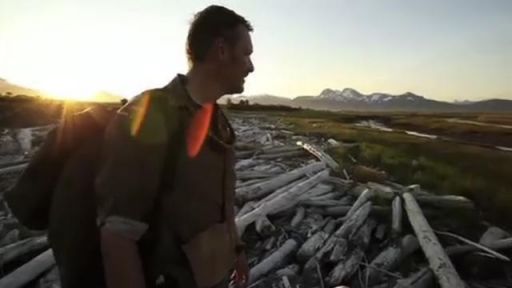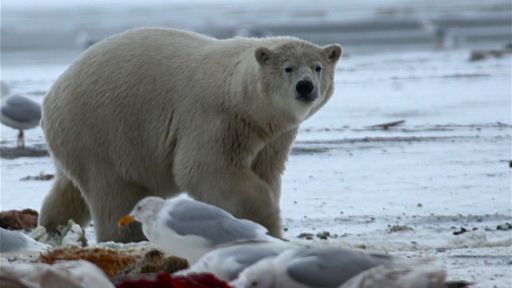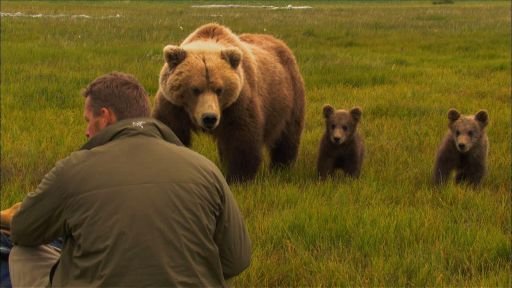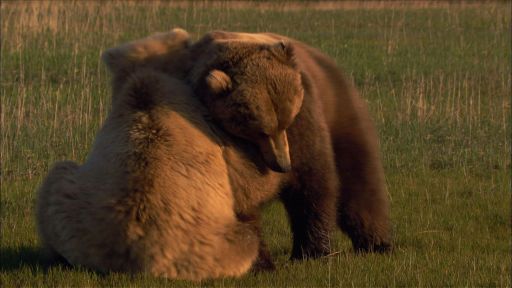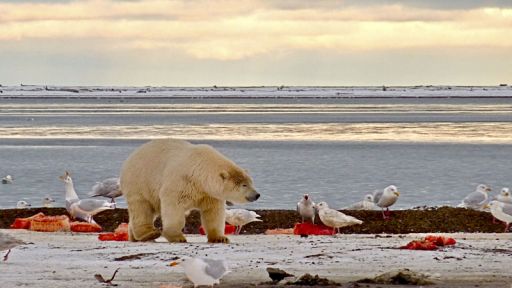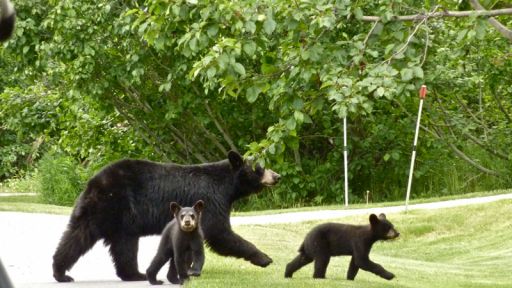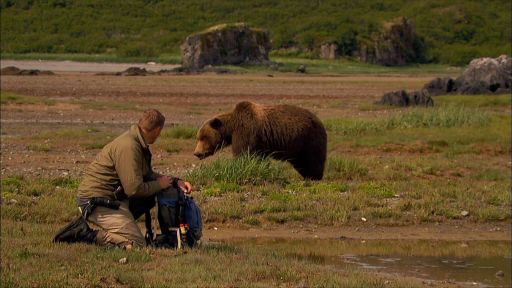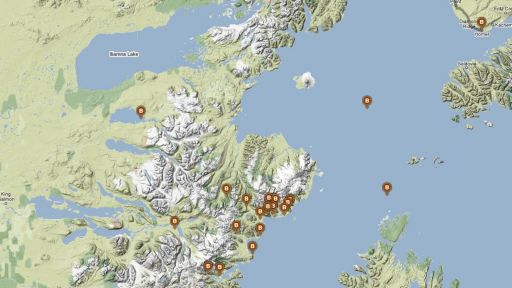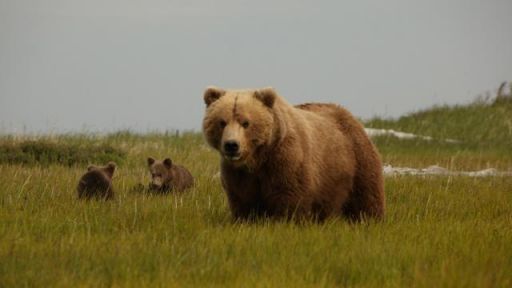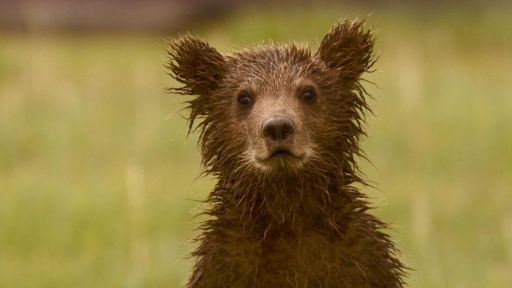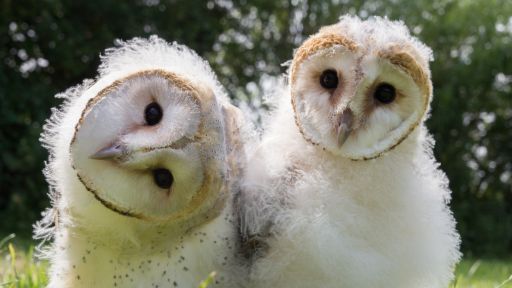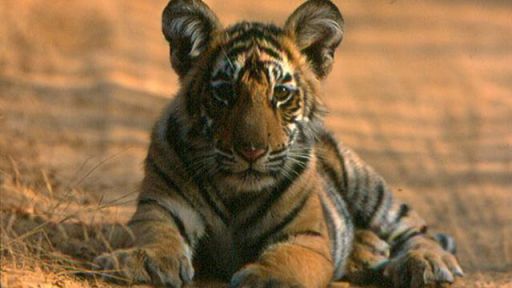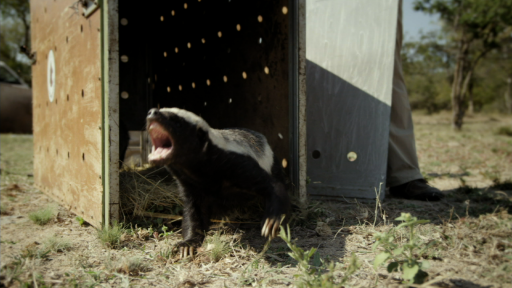
Ecologist and bear biologist Chris Morgan or filmmaker Joe Pontecorvo answer your questions about bears and the making of Bears of the Last Frontier. Have a question not addressed below? Chris answered a lot of your questions during the live webcasts following the Bears of the Last Frontier premiere. Watch the chats.
Question
I am an Alaskan who aspires to become a wildlife filmmaker and I have a two-parted question. Firstly, what advice would you offer regarding breaking into the wildlife film industry? And secondly, one of my dreams is to someday film a series showcasing wildlife and ecosystems in my home state; what kind of state permit systems and regulations did you guys come up against while working on your three-part series? Thanks! -Wilson
Answer
Alaska is a great location for wildlife photography. My own experience breaking into wildlife filmmaking started locally working as a cameraman here in Seattle with some great local producers that I really learned a lot from. If you are filming professionally you need to get a permit to film in national parks, or on BLM land. I hope this is helpful. -Joe
Question
How did you get the underwater shots of the salmon and bears ?
Answer
The underwater shots were captured with a small HD POV (Point of View Camera) on a long pole. I was able to watch the image on a small field monitor attached to the end of the pole. Thanks for your question. -Joe
Question
As a amateur photographer I had to watch this twice because I was stunned by the quality of the film or video. Was this shot in film or HD video and what brand/model cameras were used? Does the DVD show how the production was made or the detail of some shots? -Michael
Answer
Thanks so much for your comments. The show was shot on HD Video using a Sony PDW-700 XDCAM HD. My primary lens was a Canon 28-500mm HD lens, a really great pice of glass. But the real credit goes to Alaska’s breathtaking landscapes and long summer days. I’m not sure about the DVD, but many “making of” clips can be found on this website – just click on any of the locations on the map to watch. -Joe
Question
How much time do you spend out in the field every year doing this kind of work? -Laura
Answer
I do love my job, but it’s also a lot of work. I’ve spent the past eight months in post-production, sitting in a darkened room in front of a computer screen. So, I’m dying to get back out in the field. Every year is different depending upon the location, but it’s not uncommon to spend about six months of the year on location. This year we will be heading to Thailand to film Asian elephants. -Joe
Question
You showed a 5-gallon metal bucket/lid with your food in it. That wasn’t much food! Was more dropped to you from time to time & did you have any ‘delays’ in eating because the bears were so close to you? – Nancy
Answer
We had two large bear-proof containers and a smaller container for camping. We stored the containers about 200 yards from our tents. More food supplies were left on a boat that we would rendezvous with to resupply, and move us to other bays. On a few occasions we would wait for the bears to pass before breaking into the food. Getting into the bear containers is a real pain, and anything and everything that smells must be stored in them—from food to toothpaste. We did leave the Alaska Peninsula for several weeks to film further north, and then retuned again for salmon season. It was a wonderful summer and we had a lot of good dry days to film in. -Joe
Question
I was curious about your fence work around your tent- I have never heard of this technique- could you explain it? -Scott
Answer
We had three proof fences (electric fences) around our tents. The fences run on 2 D cell batteries and deliver a charge of 6,000 volts. I don’t claim to understand the science behind this, but I have seen it in action and it does work. On one occasion a bear came right up to one of our electric fences and touched it with his nose, the bear immediately jumped back and quickly walked away. We watched as he looked over his shoulders a few time in apparent dismay. In addition to our electric fences and bear proof containers, we also carried pepper spray and road flares to deter any bear that might be overly curious about us. Whenever hiking or camping in bear country, it’s always good to carry bear spray and to make sure your food is stored properly. -Joe
Question
Why didn’t the bears attack you as a food source or as a predator? -Hal
Answer
This is really a question for Chris, but I will give it a go.
In the area we were filming, along the Alaska Peninsula, brown bears have a plentiful food supply: rich sedge meadows in spring, and a bountiful salmon run in late summer. The brown bears in this area did not view us as competition, nor as a food source. Unlike Africa, bears and humans did not evolve together, so humans are not normally on a brown bears’ diet. In general bears tend to avoid people whenever possible. -Joe
Question
Dear Chris,
If you want bears to stay in their desired locations, why not plant what
they love to eat like berries, honey, and yes, areas with bird seeds and
other nutrients they love so they won’t enter around homes and
businesses? Thanks, Cecilia
Answer
Providing additional NATURAL foods is not a bad idea Cecilia – as long as these natural foods were planted far enough away from human residences, and as long as the species planted are native plants. But providing non-natural foods like bird seed to bears, even away from humans is not the best solution. Even if it is for the right reasons. The very best solution is education to help ensure that people do not provide food rewards for bears – especially garbage and bird feeders, but also compost, orchards, and barbecue grease! There are lots of tips about living with black and grizzly bears, wolves, and cougars our Grizzly Bear Outreach Project website: www.bearinfo.org -Chris
Question
Chris,
First, I should like to thank you for your work on behalf of bears and other wildlife, and to commend you and Joe on perhaps the finest wildlife film I ever have had the privilege of watching. I always have appreciated wildlife in a more general sense, but your “up close and personal” views instilled in me a new sense of fascination with bears, specifically.
Watching Jessy and Rick chasing black bears around backyards did raise questions in my mind concerning the feasibility of possible solutions which might diminish the necessity for such Herculean efforts:
1) Might residents be required by city ordinance to remove birdfeeders by a specific date, and to use some chemical to neutralize the odor of feed spilled on the ground, with a fine imposed for violation?
2) Might the Alaska Department of Fish and Game employ sniffer dogs to patrol urban neighborhoods in the warmer months to “alert” on birdfeeders (thus enforcing rule 1 above)?
3) Might the Department employ border collies to herd errant bears into traps or into more suitable surroundings, rather than having human beings running themselves ragged for hours to acomplish what a good sheepdog could do in 60 seconds flat?
Again, thanks so much for your fine work! Best wishes in your continuing work.
Yours truly,
Charlotte Perry McConnell
Answer
Thank you SO much for these amazing comments. it is feedback like this that fuels our work and moves us forward! THANK YOU!
1) This is a technique used in some areas, where it is illegal to feed bears, or even leave attractants out that might reward a bear. When voluntary measures do not work, I think that city ordinances are a good option – especially when it comes to keeping people safe, and bears alive.
2) Not a bad idea, but something that might be as labor intensive as the program that Jessy and Rick are responsible for. The very best option is making sure that bears and people are safer when attractants are removed. Simple things like placing garbage cans out on the morning of pick up rather than the night before; cleaning barbecues after use, picking up fruit from orchards, and reducing compost scent with lime. Plus of course knowing about how to stay safe in bear country, how to react in encounters, and learning about the fascinating ecology, behavior and diet of bears – all things that help us live alongside these amazing animals.
3) Interestingly dogs ARE used in bear management elsewhere. Karelian bear dogs are bred and trained for this exact use – they are impressive animals that really know how to behave around bears, and they are very effective. Check this organization out for more info. -Chris
Question
Chris,
Do Grizzly and Polar bears ever meet, and if so (actually, whether they do or don’t, what’s your opinion), who would be the victor in a battle between average-size bears of each species? -Andy
Answer
Great question Andy – the answer is yes they do occasionally meet. Here are a couple of interesting scenarios: we filmed polar bears on a whale carcass on the north slope of Alaska. Sometimes grizzly bears sow up here too, and although I have not been lucky enough to witness it myself, grizzly bears are often the victors when it comes to confrontations with polar bears. Pretty amazing I know. Especially as polar bears are notorious as the only truly carnivorous bear species of the eight. Also – in 2006 an American polar bear hunter shot a grizzly-polar bear hybrid in the Canadian Arctic – a surprise even for most scientists who thought that hybridization between these species could only really happen in captivity. Since that time even second generation grizzly-polar bears have been discovered in the wild. So, as surprising as it may seem, these two very different species do occasionally meet and mate in the wild. [Another important gem though is that polar bears only split from grizzly bears 150,000 years ago – a mere blip in the evolutionary timescale – so they are VERY closely related genetically]. -Chris
Question
Hi Chris. Traveled & shot w/you, Dennis Mense and all early July ’05 in Svalbard. Enjoyed much your first PBS show last week. Good work! Looking forward to the next two productions.
Chris – an important question/comment: Have you heard, read and/or studied of the great warming period – 800 thru 1300 AD? I never ever hear conservationists, biologists, etc. speak of this or try to explain it away. It [this warming period] is fascinating in what it did to the northern hemisphere, opening up Greenland allowing successful colonization and farming thus allowing the Vikings to reach N. America in about 1,000 AD, grape vineyards – wine production in N. England and Scotland [don’t know what happened in the southern hem.]. Amidst all this ‘tremendous warming’ [so much greater than what is being talked about and predicted these days] the Polar Bears, seals, walrus and such did not at all become extinct. They all adapted for about 500 years! What do your studies say about this event – how did the creatures make it then – how in fact did they survive? Greenland had to have melted back 25 – 50% or more I’d suspect in order to open up the land to allow hundreds of years of successful agriculture. This warming had to have wiped out the ice in the arctic for hundred’s of years!
Thanks much Chris. All the best wishes to you on these production efforts. -Skip Madsen
Answer
Great to hear from you Skip! Fond memories from Svalbard! Thanks for the question. I have not studied that era of warming so can’t comment in any depth. One short answer is that climate change has never occurred as rapidly as the present rate of change. This gives species of any kind VERY little time to adapt physiologically, or even behaviorally. Polar bears split from brown/grizzly bears only 150,000 years ago and so their adaptations that are focussed on thriving in Arctic conditions and hunting seals from the surface of the ice have happened extremely rapidly. “Devolving” into a more omnivorous opportunist like its grizzly bear cousin is not a realistic likelihood for the polar bear. We do stand to lose two thirds of the world’s polar bears over the next 40 years. On average that is about a bear a day – 16,000 of them. Changes are already afoot though – this is not something that will affect polar bears in the future – it is happening now – especially in the more southern populations in places like Western Hudson Bay and even the north slope of Alaska. Decades of research and hundreds of collared and tagged polar bears on the coast of Hudson bay have shown that bears are lighter, having fewer cubs, and surviving less than they used to because the sea ice is melting earlier each spring, and freezing later each fall, giving the bears less time each season to hunt seals, which are also totally dependent upon ice. -Chris
Question
I myself have been to both Anchorage and Prudhoe Bay. Alaska is indeed a fascinating place, on a grand scale, and you two captured it beautiful in your documentary which aired tonight. My question is: did you see any of those wildlife corridors that are meant to allow animals to cross under the Alyesaka pipeline? Do you think the animals actually use them?
Sincerely,
Gerald Graham, Ph. D.
Answer
Thank you for your kind comments Gerald. Yes we did see caribou move under the pipeline – in many places the pipeline is raised enough for this to happen quite easily. -Chris
Question
Great program!
In part II of the program you commented Prudhoe Bay felt the effects of climate change more than anywhere. Why?
Donna Kimler
Answer
We were referring to the fact that the affects of climate change are most pronounced in the Arctic – exactly where Prudhoe Bay is located. Thanks for the opportunity to clarify Donna! And thanks for watching. -Chris
Question
Do urban bears hibernate, ie., those in Anchorage? Thanks for answering our question. Loved the show! And cannot wait for the next installment.
Kathy Bond
Answer
Wonderful – thank you Kathy! Yes they do, but males are especially known in some areas to skip hibernation if they can find sufficient food to sustain them through winter. As you probably know, hibernation is just a mechanism to help bears avoid the lean months of winter when food is not available. If it IS available, then the need to sleep is avoided. Of course, it’s problematic if the food that the bears are accessing is from human sources like garbage and bird seed. Bears usually lose in that scenario.
Question
Do bear cubs that grow up together or in close proximity change the way they interact as adults?
Deborah Harris
Answer
I’ve seen siblings interact later in life in a way that definitely makes it seem like they “know” each other. Bears are usually solitary animals that don’t interact readily, so it is pretty apparent when they do. Sometimes after cubs are “booted out” by their mother they will hang out for some time (perhaps months). It must be a stressful time as a cub, and perhaps the company helps! -Chris
Question
An absorbing and informative video with fantastic scenes. Many thanks to you and Joe for your superb efforts. Do you believe that bears senses an individual feels threatened and is afraid? Often you would say, “Hey bear, hey bear.” Do bears have keen eyesight. Also, I often find curious that bears will stand on their hind legs to see better and wonder how this behavior evolved. Keep up the good work to help others to understand our wildlife and conservation. -John
Answer
Thank you so much John for your very kind comments. Yes I do think that bears are perceptive enough to recognize fear and anxiety in others – other bears for sure, and even other species – like humans. They have evolved to display and recognize all kinds of physical body language to help avoid nasty physical confrontations that can have bad results for both parties. Talking to a bear can help calm yourself, AND the bear, so I do it a lot whenever reassurance is needed. And yes they have quite good eyesight – probably as good as a human, and in color too. But their nose takes precedence! -Chris
Question
Are there any reintroduction projects for orphan bears? And are there any plans to reintroduce wild adults to some of the places where they once lived but were caused to go extinct by humans ? -Ryan
Answer
Thanks for the great question Ryan – yes several projects do rehabilitate and release black bear cubs in North America. These are usually cubs that have been orphaned by hunters, or vehicle collisions with their mothers etc. Most of these projects release bears into areas where black bears already occur, as opposed to “reintroduction” into areas where they formerly occurred. Although I believe black bears were successfully reintroduced to Arkansas a number of years ago. Internationally, other efforts are underway in places like Borneo where Joe and I have also filmed. There, our bear research and conservation colleague Siew Te Wong is working hard to save the sun bear. Part of his efforts focus on rehabilitating cubs that have been taken into the pet trade. In some cases they can be released back into the wild, and even into areas where they once occurred (providing the factors that eliminated them have been removed). More about Dr Wong’s amazing work here. -Chris
Question
When Nadie, and her cubs, came within six feet, or so, of you, I held my breath. Did you two have other such close encounters with mama bears, and their cubs? What scenario placed you in a higher state of alertness – possible encounters with: mama bears and their cubs; adult bears (of either gender) without cubs; or adolescents who were no longer with their mothers? -Naomi
Answer
I really appreciate the many questions about bear proximity and staying safe and respectful in bear country. Nadie and her cubs grazed right by us one day as we sat 80 yards away from her in a meadow. In bear habitat, bears call the shots. She did the approaching, not us, and often in this area, the best course of action is to remain very calm and still to let the bears pass without causing her any anxiety. I’ve spent my career teaching about bear conservation and how to be safe in bear country, and I’ve spent thousands of hours among Alaska’s coastal bears over the last decade, so it is important to me that people understand exactly what is going on in this location with the coastal brown bears of the Alaska Peninsula, and the context of their behavior. The coastal brown bears (Ursus arctos) that we filmed in SW Alaska have access to healthy runs of salmon which means that these normally solitary animals have become quite tolerant of each other over a rich food resource. In certain situations, they seem to extend that tolerance to humans, and will frequently come quite close to people during their everyday feeding activities. Some of these bears in this area have seen people before, and have not had a reason to treat humans as anything other than a pretty neutral species – they have become “human-habituated”. They don’t associate people with food, and that is critically important. Like this female – she’s well used to being on the same meadow as humans and she knows we pose no threat, or have any food to offer!
It is also important to note that all bears are different. In fact any two bears can be as different as any two people, so it is not always easy to predict how they might behave. But a lot of it comes down to understanding bear behavior, body language, and motivation.
The bears on the Alaska Peninsula (episode 1) are socially very different to grizzly/brown bears (Ursus arctos) in the interior (e.g. Denali, or in the Lower 48 Yellowstone, Glacier etc), where a much larger buffer space is advised. Generally speaking, close-up interactions with bears should be avoided at all cost (Wildlife + Distance = Safety). Situations can vary immensely and a knowledge of bear behavior is essential when determining the best course of action.
For more information on bear safety, please go to our Grizzly Bear Outreach Project (GBOP). -Chris
Question
What inspired you to go into your career? -Eva and Coralie
Answer
A completely chance happening – I met a black bear biologist who was doing research on the population of bears in the White Mountains of New Hampshire when I was working on a summer camp as an 18 year old visitor from the UK. he took me out into the field to capture bears and the experience changed me forever. Before that I was planning to be a graphic designer! For the longer version you’ll have to read my book :-) -Chris
Question
Will the mama bear always know who her cubs are for years to come? -Cathy
Answer
I do think there is family recognition yes, but that doesn’t always mean that there is family acceptance – they can still get testy! -Chris
Question
Hi Chris & Joe,
I am wondering if you encountered any signs hybrid polar-grizzly bears while in the north and what your thoughts are on the subject. Although rare now, with climate change causing grizzlies to slowly move north, the chances of more hybrids will probably increase. Currently, the Endangered Species Act doesn’t protect hybrid animals, but some say it should. Also, could hybridization further endanger the polar bear?
And what are the other dangers of hybridization … sterilized bears, weakened species?
I would like to take this opportunity to thank you both for this amazing series! I plan to purchase the Blu-ray disc and book so I can relive it and to share the experience with friends. The photography was breathtaking, not only of the bears, but the scenery!
Take care,
Bob Loveless
Vancouver, Canada
Answer
Thanks so much for your kind comments Bob – it sounds like you might really enjoy the accompanying book too (‘Bears of the Last Frontier’) which goes into a lot of detail about the bears, their behavior, ecology, and conservation, as well as behind the scenes stories from our filming. We didn’t come across hybrid bears, but grizzly-polar bear hybrids do exist as you know, and have recently been found in the wild. Even second generation hybrids, meaning that the first generation were fertile, which is a qualification usually restricted to within species. Polar bears are very closely related to grizzly/brown bears having only split from them some 150,000 years ago, so it is not surprising that they are physiologically capable of breeding, but it has surprised a lot of bear scientists that they are behaviorally capable of breeding. The theory used to be that these two species readily avoided each other. It’s an interesting concept about the ESA protection for hybrid species, and a complex debate. The threat to polar bears by hybridization is far less concerning than the threat from climate change though for sure. -Chris

